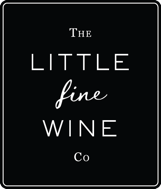
As you may be able to tell from our wine range, our favourite red grape variety, by far, is Pinot Noir. Its combination of red berry perfume, fine texture on the palate and excellent balance is extremely alluring. The grape is tricky to grow and tricky to vinify (which means it is never the cheapest wine offered) but is found widely around the world and is reliably consistent; those who are keen on ‘blind’ wine tastings rarely struggle to spot a Pinot Noir!
The Pinot Noir family
Pinot Noir is often abbreviated to Pinot and therefore could be confused with Pinot Grigio and Pinot Blanc. These grapes are in fact all related (Pinot Gris/Grigio, Pinot Blanc, Pinot Meunier are likely variants, or clones, of Pinot Noir). But, for avoidance of doubt, if Pinot is mentioned, assume Pinot Noir is meant, i.e the red grape.
As an aside, it is a prodigious variety, being the parent (along with Gouais Blanc) of other famous grapes Chardonnay, Aligote, Melon de Bourgogne (the grape now found in Muscadet), Gamay, Pinot Precoce (often found in the UK’s cool-ish climate) and many others. So, if there is one grape to know, it’s Pinot Noir!
Styles of Pinot Noir
Generally, Pinot Noir is one of the few grapes you can spot from the colour in the glass. It’s noticeably lighter in colour than other wines found in the same region/country. It’s possibly confused with a Beaujolais or Valpolicella, but otherwise, the low colour intensity is a bit of a giveaway.
Pinot Noir tends to have red fruit aromas and flavours in the glass. Think strawberries, raspberries, cherries and cranberries. Warmer climates might provide black fruit characters such as blueberries or cherries, or even some dried fruit characters. But red fruit notes are the telltale sign you may have a Pinot noir in your glass.
In addition to this, Pinot Noir wines are often aged in oak barrels, but are not usually in new oak barrels. The new oak is what gives the wine a particularly spicy or toasty character, and often this is reserved for Cabernet, Merlot or Syrah, the fuller-bodied red grapes.
With age, Pinot Noir’s character becomes even more interesting, taking on earthy, mushroom or gamey characters. And when the ‘whole-bunch’ technique is used in the cellar (where the stems of the bunches are kept in the fermentation vats for several days), a lovely herb/lavender character can present itself in the glass. Pinot Noir is never dull!
It’s also a thin-skinned grape which translates into wines with low tannin. This is why you may hear winemakers suggesting you chill your Pinot Noir in summer. Wines with low tannin such as Grenache or Pinot tend to chill down well, whereas thick-skinned, high-tannin grapes such as Cabernet Sauvignon taste bitter at cooler temperatures.
Pinot Noir is also a grape which has high natural acidity, so there is frequently a fresh quality to the wine, a lightness and elegance relative to other good reds. It makes a delicious food match. Try a fruity Pinot Noir such as Ata Rangi’s Crimson with duck, turkey or chicken, with mushroom risotto or a charcuterie platter, and it will wow! It’s extremely versatile and tends to be the wine that will please a crowd over a Christmas dinner, for example.
Where do you find Pinot Noir?
Pinot Noir remains the sixth largest red grape variety in the world. But, Burgundy is Pinot Noir’s homeland, where it’s the largest red grape by far, and is responsible for 39.5% of all grapevine plantings. You can also find good examples of Pinot Noir in Alsace, the Loire Valley (where it tends to make very good Sancerre Rouge and Rose) as well as the Languedoc (see our Altugnac Pinot Noir for a light, refreshing and remarkably good value Pinot).
Head into Germany and particularly the Ahr and Baden regions for further fine Pinot (it is known as Spatburgunder in Germany). Or to Eastern Europe for light, fruity and ultimately more simple versions. But for serious Pinot Noir outside of Burgundy, the most exciting areas, in our opinion, are the following:
Oregon and particularly the Willamette Valley regions such as Dundee Hills and Eola-Amity: Try Drouhins’ delicious Pinot from Dundee Hills or Cristom’s Marjorie Vineyard from Eola-Amity),
California, where with Sonoma Coast and Santa Barbara are highlights: Try La Crema or Hirsch if you are keen to splash out.
Victoria, in South Australia: Curly Flat, Bindi, Kooyong and Yarra Yering are all great examples.
New Zealand: Central Otago and Martinborough such as Valli, Felton Road or Ata Rangi
Generally, the high acidity of Pinot Noir is valued for sparkling wines. So, it’s a major component of almost all great Champagnes, as well as many of the English traditional method wines that have broken onto the wine scene of late, such as Exton Park or Nyetimber. Plus, Franciacorta (try Ca del Bosco), Tasmanian and Californian Sparklings, Cape Classique from South Africa and others.
It’s not an easy grape to grow, which restricts plantings of Pinot Noir to certain wine regions. This, plus the fact that it’s difficult to extract tannin and flavour from Pinot Noir grapes in the cellar, means it’s often referred to as ‘the Heartbreak grape’! It has thin skins and buds relatively early, therefore is susceptible to disease and frost. This usually means low yields, which never pleases the grape grower. It also loses freshness and precious acidity quickly in a warm climate, so you’ll find that most of the climates above are on the cooler side, or at least sheltered from the fiercer temperatures of other warmer wine regions. Making Pinot Noir is a real labour of love, but is definitely worth it!
To try some of these wines, please see our full range of Pinot Noirs here
